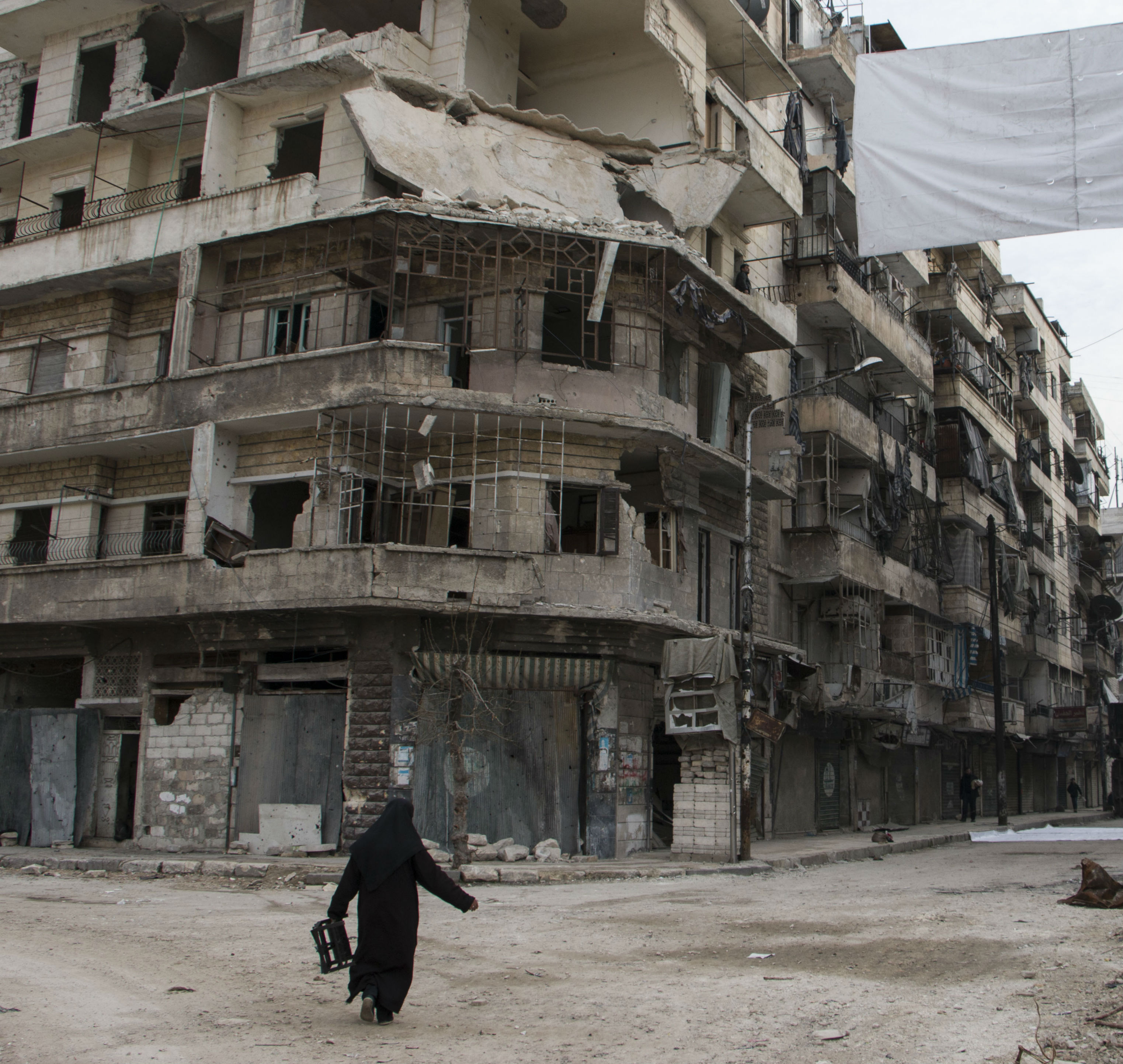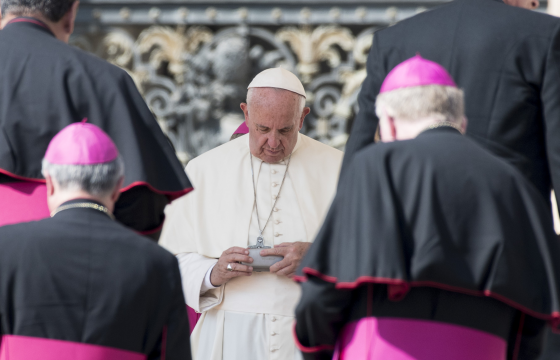Among Vatican-watchers meeting in Rome’s trattorias and cafes a question that often comes up is this: which people are closest to Pope Francis and how do they influence his decisions?
This Pope, however, has studiously avoided allowing one or two courtiers to become powers behind the papal throne. Instead the people he relies on are the nine-member “Council of Cardinals” which on Wednesday concluded their latest meeting in Rome.
Known as the “C9” the council of cardinals was instituted just a month after this Pope was elected to counter the notion of a “papal court”: a place where ambitious clerics can manoeuvre their way to get close to a Pope or where they can whisper in his ear and influence a major bishop appointment.
Francis has denounced all this as the “leprosy of the papacy” and now makes the vast majority of his big decisions in consultation with the group that acts as the equivalent of a papal cabinet. The C9 is a collegial body which was not set up by papal whim but which was recommended by cardinals meeting before the 2013 conclave that elected Francis.
Representing different parts of the Catholic world, it is the major sounding board for the Latin American Pope assisting him with appointments to big dioceses and key papal documents. When they gather in Rome the group have their meetings and meals together in the Pope’s residence and guesthouse, the Domus Sanctae Marthae. And away from the Eternal City the cardinals stay in regular contact with each other, sharing documents and talking about the big issues facing the Church.
Top of their agenda this week was how bishops should be selected with Francis consistently calling for leaders who are compassionate pastors rather than those that act like “princes.” And it’s safe to assume that Francis and his advisers looked at how they might better implement his wishes. “The cardinals reflected extensively on the spiritual and pastoral profile necessary for a bishop today,” Vatican spokesman Greg Burke confirmed on Wednesday.
The C9 should not be confused for a cosy papal club: it includes big hitters such as the German Reinhard Marx and Australian George Pell known to have clashed with each other while debate and disagreement are welcomed at the meetings.
For his part Francis attends morning and afternoon sessions ensuring he listens carefully to different views expressed and, according to one member, raising his hand whenever he wishes to speak. So far the group have overhauled the Vatican finances, set up a new communications secretariat, announced a papal child protection commission and helped create new two new curial departments.
One of the major tasks for the C9, however, is reform of Catholicism’s central administration - the Roman Curia - through a major restructuring. “We want the curia to respond to today’s needs,” India’s Cardinal Oswald Gracias, one of the C9 members, told The Tablet. “It’s a question of creating a mentality and attitude of service - to help the Church, help the world and the bishops.”
In other words it is about ending the court, careerism and setting up a structure by which Rome serves rather than dictates to local churches, something bishops leading dioceses out “in the sticks” have often complained about.
One of the problems in the curia is that departments are run as personal fiefdoms by prelates where there is little co-ordination with one another. And it’s not just different Vatican bodies who don’t communicate with the other one but sometimes sections within the same dicastery keep each other out of the loop.
“Once leaders lose a sense of community among themselves,” the Pope said in a speech diagnosing the curia’s ills. “It then becomes an orchestra that produces noise.”
The C9 and the Pope have been working hard to create some sweeter sounding music. As a result new Vatican dicasteries - one focussing on social justice questions and another on laity and family life - have been announced and with the promise that lay people will be appointed to senior positions within them.
These dicasteries were discussed by the cardinals this week and the general thrust here is that work will be better co-ordinated, more streamlined and less bureaucratic.
The new bodies, which merge a number of other Vatican departments, have been set up in the hope they will offer practical help to churches on the ground from supporting families to working with migrants.
Cardinal Gracias stressed that a key driver behind the C9’s planned reforms is collegiality - the notion of the Pope governing the Church with the bishops as set forward by the Second Vatican Council.
Part of the group’s work is helping bring about what Francis has described as a “healthy decentralisation” in the Church. And if it works it has the potential to be the biggest re-shaping of the Church’s headquarters in decades by allowing local dioceses to take more control.
During the latest meeting the group looked at the role played by Holy See’s ambassadors, known as nuncios, in selecting new bishops. These prelates draw up the paperwork and submit three candidates to be discussed by the Vatican department in charge of appointing bishops. But it’s all done in strictest secrecy and with minimal consultation. As a result, many reformers would like to see ordinary Catholics given a greater say on who gets to lead them: could this be a reform the C9 eventually approves?
So far, however, change has been pretty slow in coming. One of the original aims of the group was to give the curia a revised constitution - a new raison d’être - and two years ago it was announced that that this was reaching an “advanced stage of preparation.” Since then nothing’s been announced and sources inside the Vatican say the constitution is still a long way off. A major problem facing the C9 is internal resistance in the Roman Curia many of whom feel they have lost their influence.
“There have been times when they have made decisions but these then come up against resistance inside the Vatican,” one source explained.
Reforming an 2,000 year old institution is not a simple task, and especially so in the Roman Curia where structures and working patterns have not changed in years.
“We’ve been looking at a lot of different things and hope to push a little faster,” Cardinal Gracias explained, adding that the C9 meets again in December where they plan to tie things up ahead of a major unveiling of how a re-booted Curia is going to look. "By announcing lots of things together it will hopefully give a clearer vision. It is falling into place,” he stressed.
The original plan for the constitution was for the C9 to revise John Paul II’s 1988 document Pastor Bonus on the organisation of the Vatican although the group has decided to go back to the drawing board. Cardinal Gracias explained the council are working on a “new constitution” which will have an outward looking, evangelising thrust rather than simply a bureaucratic shuffling of the deck.
What might disappoint reformers though is that the changes at the moment seem gradual and even piecemeal, a frustration which is likely to deepen as the Pope and his advisers grapple with a mountain of challenges within a multi-layered and complex organisation.
“They [the changes] are not going to be an earthquake,” Cardinal Gracias admits.
But the big shift is the new method of papal governance that Francis has introduced - one where Popes no longer rule as monarchs but instead made their decisions in a collegial and consultative way. And this might just open the door to some even bigger reforms in the long run.




 Loading ...
Loading ...